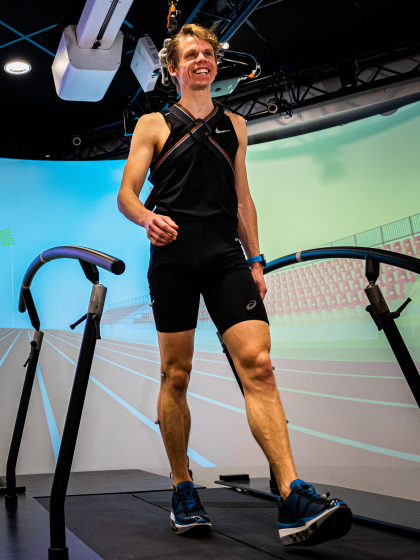dr. L. (Laurens) van Kouwenhove

IndiRock (2017 - 2021)
Development of a Rocker-soled shoe
Runners often experience injuries to the Achilles tendon and the plantar fascia under the foot. Approximately one in five runners faces this issue, which is not surprising given the amount of stress these structures endure during a simple run. But how inevitable is it, and isn't there a type of shoe that can address this?
Multiple studies indicate that a shoe with a so-called 'rocker profile' can reduce the load on the Achilles tendon. In essence, such a sole is nothing more than a stiffened sole with a pronounced curvature. In the Netherlands alone, hundreds of thousands of people use special medical insoles, benefiting from improved gait correction, the technical term for the shape of the shoe sole. Crafting such responsible insoles is a challenging, time-consuming, artisanal task, and the outcome often varies in quality because the effectiveness depends on the skill of the shoemaker.
In the SNN-subsidized project IndiRock, four parties collaborate on a new concept in this field: UMCG, the orthopedic shoe and instrument workshop OIM, software development company aXtion, and Hulotech, a specialist in rapid prototyping. The goal is to determine the ideal gait corrections based on innovative measurement methods. Together, we conduct research on the medically reliable translation of this data, manufacturing technology, and material knowledge. The individual characteristics of a foot and the walking pattern are translated into a model of a shoe sole using an algorithm. This model incorporates numerous features that the shoe sole must meet. Knowledge about these features is drawn from current research, but it is possible that additional research is needed for some properties. How large should the curvature be? Where should this curvature start? How flexible should the sole be? These are just a few of the questions that need to be answered before a custom-made shoe sole can be developed. Ultimately, we are developing the technology that will significantly improve the quality and reproducibility of gait corrections. With this, we hope to provide a tool for a large group of patients in their battle against Achilles tendon problems.
